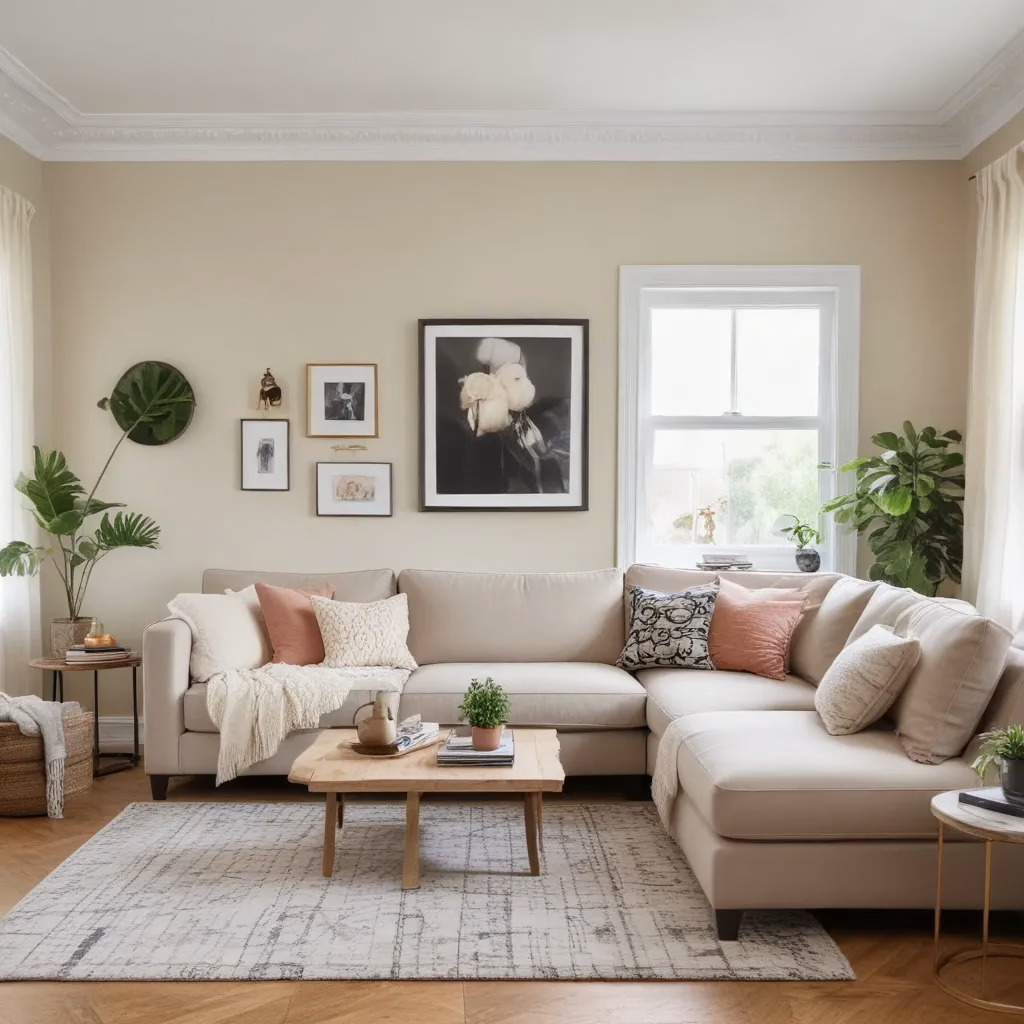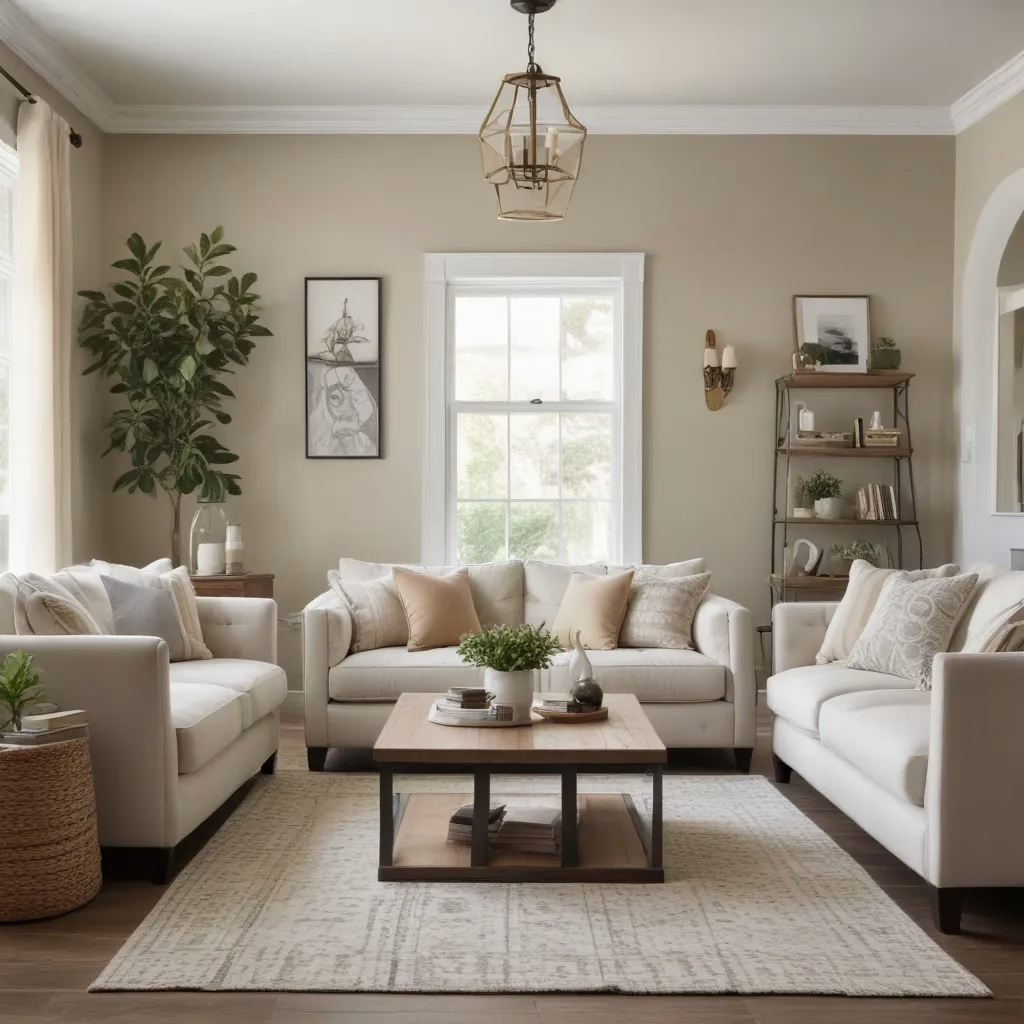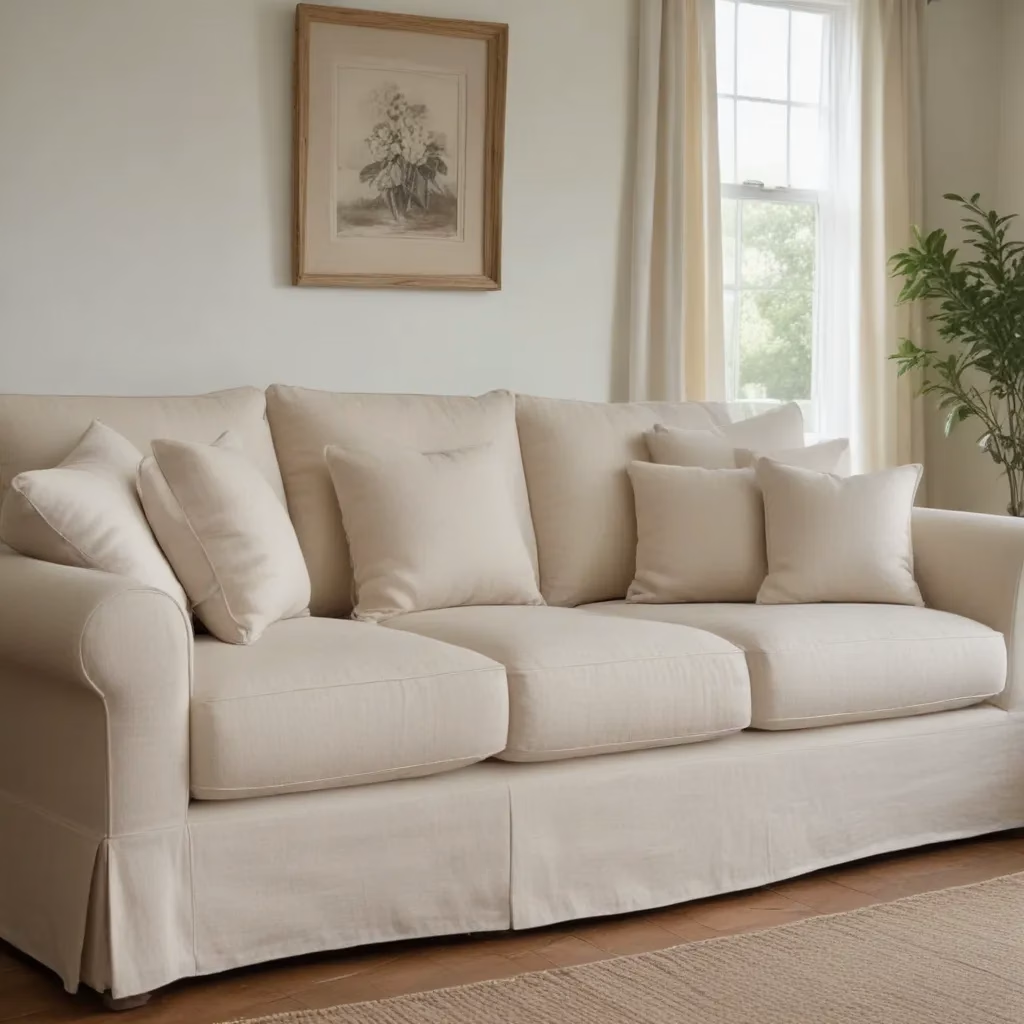
When it comes to furnishing your living room, the sofa is undoubtedly the centerpiece. Not only is it the main seating option, but it also sets the tone for the entire space. Choosing the right sofa – in terms of size, style, and upholstery – is crucial, but equally important is how you arrange the rest of your living room furniture around it.
The way you position your sofa and complement it with other pieces can make or break the functionality and aesthetic of your space. Whether you have a small, cozy nook or a sprawling open-concept layout, strategic furniture placement is key to creating a cohesive, inviting living room that meets your needs.
In this comprehensive guide, we’ll explore a range of living room layout strategies, from arranging your sofa as the focal point to integrating it seamlessly into a multifunctional space. 〰️ Let’s dive in and discover how you can design your living room around your star piece – the sofa.
Sofa Selection and Upholstery
Before we get into the nitty-gritty of furniture placement, it’s important to double-check that you’ve selected the right sofa for your space and lifestyle. After all, the sofa will be the foundation upon which you build the rest of your living room design.
Fabric and Upholstery Considerations
When choosing a sofa, the fabric and upholstery are critical factors to consider. Durable, easy-to-clean fabrics like performance chenille, microfiber, or stain-resistant leather are ideal for high-traffic living rooms, especially if you have pets or young children.
For a more formal or elegant look, rich velvets or textured boucle upholstery can add a luxurious touch. Linen and cotton blends offer a more casual, relaxed aesthetic. And don’t forget to think about color and pattern – from neutral palettes to bold prints, your sofa’s upholstery can set the tone for the entire room.
Durability and Maintenance Requirements
Beyond aesthetics, it’s essential to prioritize long-term durability and maintenance requirements when selecting a sofa. Look for sturdy frame construction, well-reinforced joints, and high-quality cushion fillings like high-density foam or down-blend.
Consider how easy the upholstery will be to clean, whether you can spot-clean spills or need to dry clean the entire piece. Fabrics with stain-resistant or moisture-wicking properties can be a lifesaver for busy households.
Living Room Layout Strategies
Now that you’ve found the perfect sofa, it’s time to think about how to arrange it within your living room. There are several key principles and strategies to consider when designing your furniture layout.
Furniture Arrangement Principles
One of the most fundamental rules of living room layout is to create a clear focal point. This could be a fireplace, a large picture window, or even your sofa itself. Arrange your other furniture pieces to direct attention towards this central focus.
Another crucial element is traffic flow. double-check that there are unobstructed pathways for people to move around the room comfortably, with at least 3 feet of clearance between the coffee table and sofa.
Balancing Room Proportions
When arranging your living room furniture, be mindful of the scale and proportions of your space. In a small room, opt for compact, streamlined pieces that don’t overwhelm the area. Conversely, in a larger living room, choose furniture with more substantial dimensions to fill the space without making it feel sparse.
Defining Conversation Areas
To promote socialization and facilitate conversation, consider creating designated conversation zones within your living room. Position your sofa and accompanying chairs to face each other, with a coffee table or ottoman in the center. This arrangement encourages face-to-face interaction and creates an intimate, welcoming atmosphere.
Integrating Focal Points
If your living room has a prominent focal point, such as a fireplace or large window, use your sofa to frame and highlight it. Arrange the sofa facing the focal point, with additional seating pieces flanking it on either side. This creates a visually balanced and harmonious layout.
Zoning Open-Concept Spaces
In open-concept living areas, use your sofa to delineate different zones within the larger space. For example, position the sofa to separate the living room from the dining area, or use it to anchor a cozy conversational nook within the open floor plan.
Sofa Care and Maintenance
Proper care and maintenance are essential for keeping your sofa looking its best and ensuring it lasts for years to come. From cleaning and stain removal to upholstery repair and preventative measures, here are some tips to keep your sofa in tip-top shape.
Cleaning and Stain Removal
Regularly vacuum and spot-clean your sofa to remove dirt, dust, and any spills or stains. For stubborn stains, consult the manufacturer’s instructions or use a mild, water-based detergent and a soft-bristled brush. Avoid harsh chemicals or abrasive cleaners, as they can damage the upholstery.
Upholstery Repair and Rejuvenation
Over time, your sofa may develop some wear and tear, such as sagging cushions or loose fabric. Address these issues promptly to prevent further damage. Consider professional upholstery services for more extensive repairs or to give your sofa a fresh, renewed look.
Preventative Measures for Long-term Use
To prolong the life of your sofa, rotate and fluff the cushions regularly, and avoid direct sunlight which can cause fading or deterioration of the fabric. Use throw blankets or slipcovers to protect the upholstery, and consider investing in a sofa cover when not in use.
Styling for Comfort and Aesthetics
While the core function of a sofa is to provide comfortable seating, it also plays a crucial role in the overall aesthetic of your living room. By incorporating carefully curated accessories and décor elements, you can transform your sofa into a stylish centerpiece that enhances the entire space.
Accent Pillows and Throws
Strategically placed accent pillows and cozy throws can instantly elevate the look and feel of your sofa. Mix and match textures, patterns, and colors to create a visually interesting and inviting arrangement.
Complementary Décor Elements
Tie the sofa into the rest of your living room by incorporating coordinating artwork, area rugs, and side tables. These complementary pieces will help to unify the overall design and make the sofa feel like an integral part of the space.
Lighting and Textural Layers
Proper lighting can dramatically impact the ambiance and functionality of your living room. Position floor lamps and table lamps around your sofa to create a warm, inviting glow. Additionally, incorporating textural layers through items like woven baskets, potted plants, or decorative trays can add depth and visual interest to your sofa vignette.
Buying Guides and Research
When it comes to selecting the perfect sofa for your living room, thorough research and careful consideration are crucial. From understanding sofa dimensions to evaluating brand reputation, here are some key factors to keep in mind during the buying process.
Sofa Size and Measurement
Accurately measure your living room space to double-check that the sofa you choose will fit comfortably without overwhelming the area. Consider the length, depth, and height of the sofa, as well as how it will relate to the size of your other furniture pieces.
Frame Construction and Support
Examine the frame construction of the sofa, looking for solid wood or metal components that provide sturdy, long-lasting support. Pay attention to the cushion filling as well, as high-density foam or down-blend options will offer superior comfort and durability.
Brand Reputation and Reviews
Research well-known sofa brands with a reputation for quality craftsmanship and customer satisfaction. Read online reviews from previous buyers to get a sense of the durability, comfort, and overall customer experience.
Integrating the Sofa into the Space
Once you’ve found the ideal sofa and laid out your living room furniture, the next step is to seamlessly integrate the sofa into the overall design of the space. This involves creating a cohesive, visually harmonious environment that balances functionality and aesthetic appeal.
Cohesive Design Scheme
double-check that your sofa complements the broader design scheme of your living room, whether that’s a modern, minimalist aesthetic or a cozy, traditional vibe. Coordinate the sofa’s upholstery, color, and style with your existing décor to achieve a polished, intentional look.
Balancing Functionality and Style
While the sofa should be a stylish centerpiece, prioritize its practical functionality as well. Arrange the sofa to facilitate conversation, accommodate traffic flow, and provide ample seating for your household and guests.
Personalizing the Living Room
Ultimately, your living room should reflect your unique personality and preferences. Incorporate personal touches, such as family photos, artwork, or sentimental décor, to make the space truly your own and infuse it with warmth and character.
Versatile Sofa Applications
Sofas can be incredibly versatile, adapting to a wide range of living room layouts and serving multiple functions within the home. From open-concept living to modular seating solutions, explore how you can maximize the potential of your sofa.
Open-concept Living
In open-concept floor plans, use your sofa to define distinct zones within the larger space. Position it to separate the living room from the dining area or to anchor a cozy conversation nook in the middle of the open layout.
Sectional and Modular Options
Sectional sofas and modular seating systems offer incredible flexibility in terms of layout and configuration. Arrange the individual pieces to suit your specific space and needs, whether that’s a L-shaped setup for a small living room or a U-shaped configuration for a larger area.
Multi-purpose Seating Solutions
Beyond traditional living room arrangements, consider using your sofa in unexpected ways. For example, position a chaise-style sofa near a sunny window to create a cozy reading nook, or use a sleeper sofa to accommodate overnight guests.
Trends and Innovation in Sofas
As the heart of the living room, the sofa is constantly evolving to meet the changing needs and preferences of modern homeowners. Explore the latest trends and innovative features that are shaping the world of sofa design.
Sustainable and Eco-friendly Materials
Driven by a growing emphasis on environmental consciousness, many sofa manufacturers are embracing sustainable materials, such as recycled fabrics, renewable woods, and plant-based cushion fillings. These eco-friendly options allow you to make a stylish and responsible choice for your living room.
Technology and Smart Features
The integration of technology into home furnishings has also reached the sofa. Some models now feature built-in charging ports, Bluetooth connectivity, or even motorized recline and adjustment mechanisms for enhanced comfort and convenience.
Customization and Bespoke Design
For those seeking a truly personalized sofa experience, custom-made or bespoke options are becoming increasingly popular. Work with a designer or manufacturer to select the perfect size, shape, fabric, and features to suit your unique living room and lifestyle needs.
As you embark on your living room design journey, remember that the sofa is the foundation upon which you can build a cohesive, functional, and visually appealing space. By thoughtfully considering your sofa selection, layout strategies, and styling choices, you can create a living room that not only looks stunning but also meets your everyday comfort and entertainment requirements.
Happy designing!
Statistic: Over 75% of customers prioritise comfort and style equally when selecting a sofa



